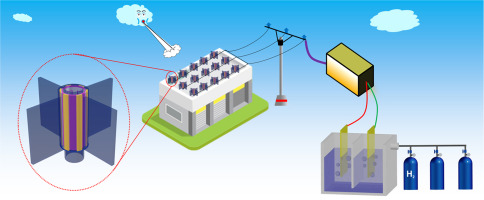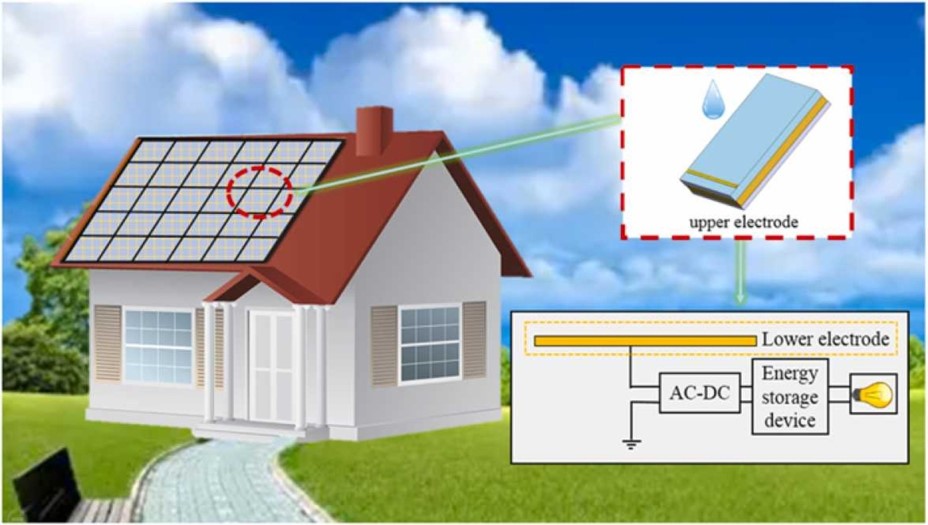Energy from Falling Raindrops Is Captured Efficiently by New Triboelectric Nanogenerator Technology
This illustration depicts a possible design for these D-TENG panels. It also shows how the bridge construction, in conjunction with the lower electrodes, can boost energy storage capacity. Tsinghua University Press and iEnergy for the image.
Each raindrop generates a tiny quantity of energy that can be harnessed and transformed into power as it falls from the sky. Hydropower, which uses the kinetic energy of moving water to generate electricity, might be thought of as a precursor to this process. Several scientists have proposed harnessing the energy of raindrops as a clean and reliable energy source. However, scaling up this technology has proven difficult, restricting its usefulness.
Triboelectric nanogenerator (TENG) devices, which use liquid-solid contact electrification to gather raindrop energy, have been demonstrated to be effective. This method can also be used to extract power from liquid-solid triboelectricity and waves.
Connecting many panels together would increase power production, however this is technically not possible with droplet-based TENGs (D-TENGs). A recently released research details how the efficiency of raindrop energy harvesting is increased by modeling D-TENG panels after solar panel arrays.
“Although D-TENGs have extremely high peak output power, it is still challenging for a single D-TENG to provide continuous power for electrical equipment that requires several megawatts. Zong Li, a professor at Tsinghua University’s Shenzhen campus and the director of the university’s Tsinghua Shenzhen International Graduate School, emphasized the significance of realizing the simultaneous deployment of many D-TENGs. “We are proposing a simple and effective method for raindrop energy harvesting, with reference to the design of solar panels, in which multiple solar power generation units are connected in parallel to supply the load,” they write.
There is unexpected coupling capacitance between the upper electrode and lower electrode of the panels when numerous D-TENGs are coupled. The power output of the D-TENG arrays is diminished due to this undesired coupling capacitance. Researchers have developed bridge array generators, which utilize array lower electrodes to mitigate the problem by lowering the capacitance’s influence.

Triboelectrification is the mechanism through which the panel generates and stores energy from rainwater. The droplet acquires a positive charge and the panel surface, known as the FEP surface, acquires a negative charge upon impact. Each each droplet contributes just a negligible amount of charge, and the FEP’s surface charge will naturally evaporate with time. The charges on the FEP surface will build to saturation after being at the surface for a long time, as stated by Li. When this happens, the quantity of charge generated by each droplet impact is equal to the pace at which the FEP’s surface charge is being dissipated.
The conventional D-TENG was compared to the bridge array generators to show the effectiveness of the array lower electrodes. The efficiency of bridge array generators with sub-electrodes of varying sizes was also compared. The impact of panel thickness on power loss was also investigated. The performance of the bridge array generator may be enhanced by increasing the FEP surface thickness, which decreases the coupling capacitance while preserving the surface charge density.
Independent rainwater collection panels became possible after the development of bridge array generators for collecting energy from raindrops. These generators made use of array bottom electrodes and bridge reflux structures. As a result, electricity could be lost less by accident. The advantages of bridge array generators in large-area raindrop energy harvesting are demonstrated in full by the fact that their peak power production is about five times higher than that of conventional large-area raindrop energy with the same size, reaching 200 watts per square meter. According to Li, the study’s findings will allow for the development of a practical plan for the widespread collection of raindrop energy.








